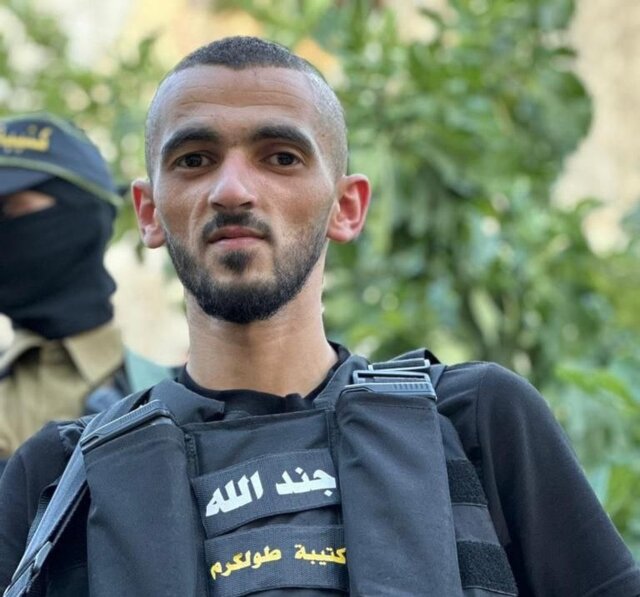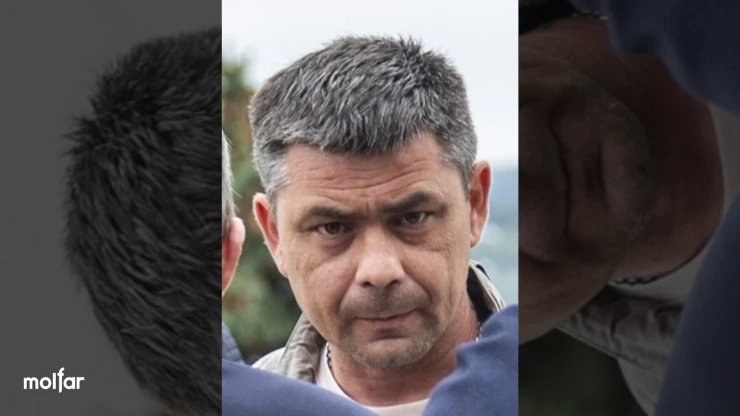Resisting Al-Assad’s Advance: A Look at Two Rebel Commanders Inside Aleppo (Free)
Resisting Al-Assad’s Advance: A Look at Two Rebel Commanders Inside Aleppo (Free)
Omar Abd al-Razaq
The military forces and adjutant militias under the command of the al-Assad government, supported by Russian airstrikes and predominately foreign sectarian Shia militias mobilized by Iran’s Islamic Revolutionary Guard Corps (IRGC), are making significant progress in the campaign to seize the opposition controlled areas in the eastern districts of Aleppo (Al-Alam [Tehran], December 3; YouTube, December 1; Al-Hayat, December 1; Reuters, November 24). After several weeks of negotiations, eleven armed opposition organizations active in the city have responded to the latest offensive conducted against them. Together they have formed Jaysh Halab (Army of Aleppo), a coalition force seeking to unify the generally fractious rebel forces in the city in order to better coordinate their defense of the remaining opposition-held areas and to attract more foreign military support (Daily Sabah [Istanbul], December 1; Baladi News [Aleppo], November 30; YouTube, November 14).
Omar Abd al-Razaq (a.k.a. Abu Bashir Ma’ara) is the military commander of the Army of Aleppo. A 34-year-old native of the town of Ma’rat al-Artiq – an Aleppo suburb 14 kilometers northwest of the city center – Abu Bashir is one of the most powerful and noteworthy armed opposition leaders remaining in Aleppo (Zaman Al-Wasl [Aleppo], November 15; YouTube, August 24; Facebook, November 18, 2013). He joined the opposition movement when it spread to his native town in 2011. A year later, Abu Bashir reportedly became a member of the armed opposition on a full-time basis, rapidly gaining a reputation as an effective rebel leader in battles in and around Ma’rat al-Atiq (YouTube, August 24).
Since 2012, Abu Bashir has been a member of the controversial Islamist coalition Harakat Nour al-Din Zenki, a sociopolitical and armed opposition organization with an estimated 6,000 fighters mobilized through its constituent militias. Believed to be closely supported by Turkey, it is powerful in Aleppo governorate, particularly in the western suburbs that surround Abu Bashir’s home town and inside Aleppo city (Free Palestine Agency [Aleppo], July 21; Al-Jazeera [Doha], August 7, 2015; YouTube, July 7, 2015; Al-Malaf [Aleppo], March 10, 2015). Harakat Nour al-Din Zenki has reportedly received military assistance from the United States, including BGM-71 TOW anti-tank missiles (YouTube, May 19). Abu Bashir rose through the ranks of Harakat Nour al-Din Zenki, and is currently the overall military commander of the organization. He is currently located inside the city of Aleppo, and his activities are focused in particular on the battle going on there (Facebook, November 9; YouTube, July 7, 2015; Twitter).
Due to his organization’s close relationship with Turkey, Harakat Nour al-Din Zenki has, since 2015, contributed some of its constituent militias to Turkish-backed armed opposition campaigns against the Islamic State (IS) northeast of the city of Aleppo (All4Syria [Aleppo], August 28, 2015). Under Abu Bashir’s command, Harakat Nour al-Din Zenki has supported the Turkish military led Operation Euphrates Shield, which has seized a significant area of territory from IS along the Syrian-Turkish border northeast of the city of Aleppo (Arabi 21 [Aleppo], November 24; Al-Jazeera [Doha], September 8).
Additionally, Abu Bashir is the overall military leader of the Fateh Halab (Conquest of Aleppo), a coalition that links the most powerful armed opposition organizations in Aleppo into one joint operations force. In this role, he has been an important advocate for greater Syrian rebel coordination and unity of command in order to better combat forces loyal to or supporting the al-Assad government in the city (Zaman Al-Wasl [Aleppo], November 15; YouTube, July 20). Abu Bashir is a veteran commander who has led several armed opposition offensives in and around the city, and he is most widely known within the armed opposition movement for his command of Harakat Nour al-Din Zenki and other rebel forces that participated in the capture of the strategic, western Aleppo district of al-Rashideen (YouTube, August 24; YouTube, June 17, 2015; El-Dorar Al-Shamiya [Aleppo], June 16, 2015).
However, Abu Bashir’s command of Harakat Nour al-Din Zenki forces inside Aleppo city has not been without controversy. One such instance involved a series of intra-rebel skirmishes inside opposition-controlled areas of the city in early November. The skirmishes resulted in Abu Bashir being temporarily apprehended and held by fighters from the important U.S.-backed Aleppo armed opposition organization Fastaqim Kama Umrit (Enab Baladi [Aleppo], November 11; Orient News [Aleppo], November 3). [1] Under his command, Harakat Nour al-Din Zenki forces have closely cooperated with constituent militias of Jabhat Fateh al-Sham (JFS-formerly the al-Qaeda affiliate Jabhat al-Nusra). Moreover, Abu Bashir has insisted that JFS continue to be included in armed opposition joint operations in the city, a stance that has increased tensions with armed opposition factions within Aleppo that are concerned with losing foreign support due to the association with JFS (Al-Quds Al-Arabi, November 5; Qasioun News [Aleppo], October 19; Al-Etihad Press [Aleppo], September 27).
Hossam Abu Yassen
The other most important Aleppo governorate armed opposition organization in the Army of Aleppo is Jabhat al-Shamiya (Levant Front). A coalition of local, constituent militias that are predominately located in Aleppo governorate, particularly in the areas north of the city up to the Syrian-Turkish border, Jabhat al-Shamiya is reportedly one of the largest armed opposition organizations in northern Syria – it has an estimated strength of approximately 10,000 fighters mobilized in its constituent militias. Jabhat al-Shamiya is believed to receive significant assistance from Turkey, and it also reportedly received U.S. military assistance, including BGM-71 TOW anti-tank missiles (YouTube, July 19; Syrian Mirror [Aleppo], April 19; Al-Modon [Aleppo], January 28).
The overall commander of Jabhat al-Shamiya is Sheikh Hossam Abu Yaseen (a.k.a. Abu Yaseen). Abu Yassen also is reportedly participating in the trilateral negotiations between Russia, Tukey, and the armed opposition organizations that are participating in the defense of the rebel-held districts of Aleppo. In negotiations, the opposition organizations are believed to be seeking a cessation of the fighting for the city and the safe passage of armed opposition fighters out of Aleppo to the rural areas surrounding the city all the way to the Syrian-Turkish border. In spite of the reports of these negotiations, the Army of Aleppo, including the constituent militias of Jabhat al-Shamiya inside the city, continue to refuse to stop fighting the forces of the al-Assad government and its allies in the city (Reuters, December 4; Al-Quds Al-Arabi, December 3).
Hossam Abu Yassen, 41, a native of the Mount Simeon district that is in the southwestern exurbs of the city of Aleppo, is one of the most important armed opposition commanders in his home governorate (Revolutionary Forces of Syria Media Office, June 15; Al-Buraq Media Institution [Aleppo], April 20). His most important roles to date within the armed opposition have been as a political leader seeking greater unity among the rebel forces in Aleppo governorate, and less as a frontline commander like Abu Bashir. In spite of his chiefly political role, Hossam Abu Yaseen is still a veteran rebel leader who has participated in several of the armed opposition campaigns in the western and southern suburbs of Aleppo and within the city (Revolutionary Forces of Syria Media Office, June 15; Al-Buraq Media Institution [Aleppo], April 20).
Like Abu Bashir, Hossam Abu Yaseen joined the armed opposition in 2012. At that time, he was part of the leadership council of the small but active rebel organization Liwa al-Ansar (Partisans’ Brigade). This group was particularly active in the Mount Simeon district and other areas in the western suburbs of the city of Aleppo until it merged into Farqa 19 (19th Division) in June 2013 (YouTube, June 21, 2013; YouTube, September 16, 2012). Farqa 19 was reportedly a Syrian Muslim Brotherhood-organized coalition of Islamist armed opposition groups in the suburbs west of the city of Aleppo, formed to contest the Islamic State’s growing influence in Aleppo governorate during that time period (Carnegie Middle East Center, April 8, 2014; Al-Jazeera [Doha], February 6, 2014; Al-Quds Al-Arabi, January 4, 2014).
Building from his experience in the leadership of Liwa al-Ansar, Hossam Abu Yaseen became a well-networked commander within the broader rebel movement in his home governorate, particularly within the Syrian Muslim Brotherhood and Turkish backed coalition framework of the Jaysh al-Mujahideen (Jihadists’ Army), in which Hossam Abu Yaseen was a member of its Shura (governing consultative) council (Al-Buraq Media Institution [Aleppo], April 20; Carnegie Middle East Center, April 8, 2014). He joined the leadership of the armed opposition organization Kata’ib Thuwar al-Sham (Levant Revolutionaries Brigades) shortly after its formation in April 2015 (Zaman Al-Wasl [Aleppo], April 8, 2015). Both organizations, like Jabhat al-Shamiya, have received BGM-71 TOW anti-tank missiles (YouTube, November 15; YouTube, December 7, 2015).
By the fall of 2015, Hossam Abu Yaseen rose to become the general commander of Thuwar al-Sham. He worked to unify his organization with Jabhat al-Shamiyya, building toward the unity of the broader armed opposition movement throughout Aleppo governorate. The unification, which was reportedly a controversial move debated within the Thuwar al-Sham organization, was completed by late January 2016. As a result, Hossam Abu Yaseen was named the deputy leader of the entire Jabhat al-Shamiya organization in the middle of February 2016 (Orient News [Dubai], February 15; Al-Modon [Aleppo], January 28).
Three months later, Abu Yaseen was appointed the overall leader of Jabhat al-Shamiya on April 19 (Twitter, April 19). By the time of his appointment, he was one of the most noteworthy armed opposition commanders in Aleppo governorate. However, in July 2016, the majority of the Thuwar al-Sham organization separated from Jabhat al-Shamiya, citing an unsatisfactory unification process. Despite this separation, it is believed that four battalions (approximately 700 fighters) from Thuwar al-Sham remained in Jabhat al-Shamiya out of personal loyalty to the leadership of Hossam Abu Yaseen (All4Syria [Aleppo], July 2).
Although Jabhat al-Shamiya is an important component of the broader armed opposition movement in Aleppo governorate, Hossam Abu Yaseen’s organization is, like Harakat Nour al-Din Zenki, not immune to intra-rebel conflict. In mid-November, a coalition consisting of the local Azaz affiliates of several armed opposition organizations – a group including JFS, its close ally the militant Salafist organization Harakat Ahrar al-Sham al-Islamiyya, and Harakat Nour al-Din Zenki – targeted Hossam Abu Yaseen and other senior leaders from Jabhat al-Shamiya with military operations in Azaz. The stated motivation for these intra-rebel clashes targeting Hossam Abu Yazeen was his organization’s alleged conspiracy with the United States to provide military support for the Kurds and its heavy-handed, competitive relations with the other armed opposition organizations in and around Azaz (El-Dorar Al-Shamiyya [Azaz], November 14; Qasioun News Agency, November 14).
Conclusion
As the al-Assad government and its allies continue to apply military pressure on the remaining opposition-held districts of the city of Aleppo, the likely fall of the rebel-held areas will place greater importance on the ongoing rural insurgency in the wider governorate. Both Harakat Nour al-Din Zenki and Jabhat al-Shamiya will continue to maintain the majority of their organizations’ constituent militias in these rural areas of Aleppo governorate that are more easily reinforced and resupplied than the rebel-held areas of the city of Aleppo. A result of this likely movement of the center of gravity of the conflict in Aleppo governorate from the city to the countryside will be the increased importance of both Abu Bashir and Hossam Abu Yaseen.
Abu Bashir’s future role in the broader Aleppo governorate insurgency will likely be reinforced by his current leadership efforts on the front-lines inside of the city of Aleppo; this depends upon him surviving the current battle for control over the city. As the military commander of Harakat Nour al-Din Zenki organization, he will be well placed to lead at least a sizable part of the rural insurgency against the al-Assad government. Abu Bashir, as a veteran commander practiced in joint operations efforts across armed opposition factions, could also be a leading candidate to oversee ongoing efforts to improve the unity of command and control operations for the armed opposition movement in Aleppo governorate.
Hossam Abu Yaseen’s leadership role in the broader Aleppo governorate insurgency will be a product of Jabhat al-Shamiya’s importance as a large armed opposition organization that serves as a conduit for foreign military support to limit the territorial gains of the al-Assad government and its allies. He is also a veteran operative who is well versed in intra-rebel politics; and he will continue to be an important armed opposition commander for foreign backers of the revolution, particularly Turkey. Hossam Abu Yaseen’s rise within the leadership cadres of the armed opposition has been facilitated by his ability to work closely with Turkish-supplied, Syrian Muslim Brotherhood-supported, U.S.-approved rebel organizations. He is likely to utilize these political skills and foreign connections to be a key interlocutor for the Syrian armed opposition as it prepares to wage a more fierce rural insurgency against the al-Assad government in Aleppo governorate.
NOTES
[1] For more information on Fastaqim Kama Umrit, see MLM Briefs, September 30, 2015.

